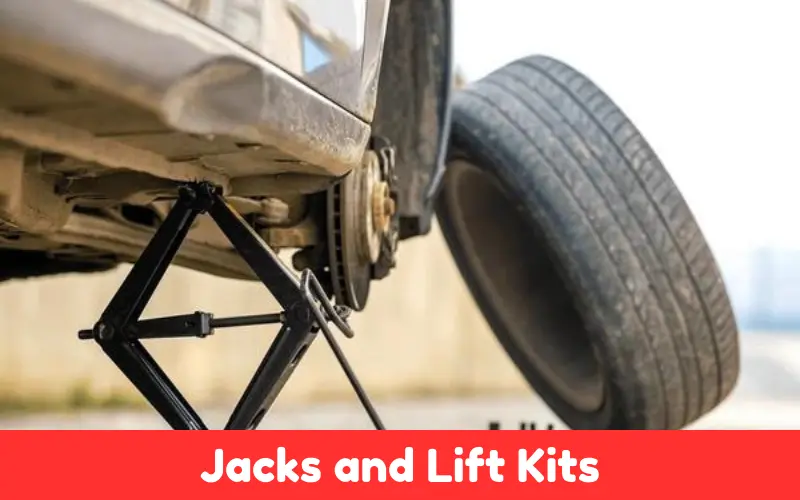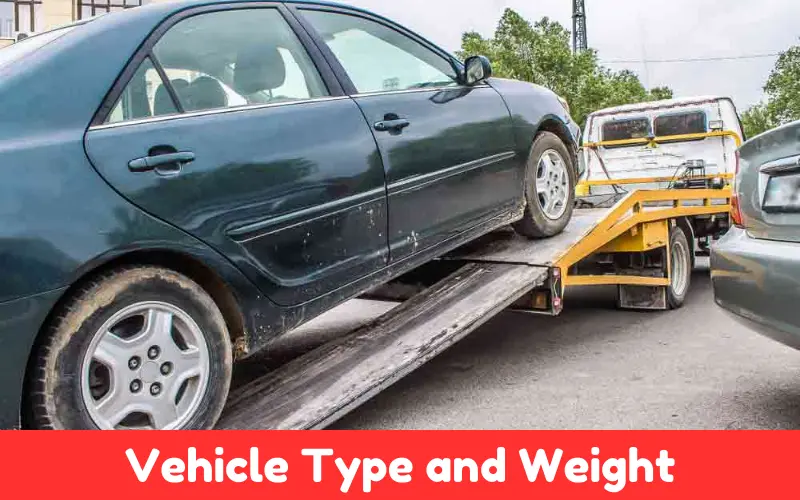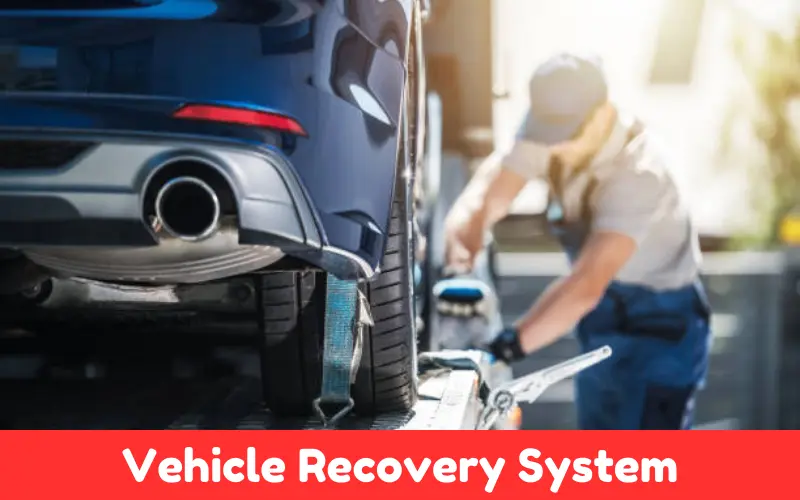A vehicle recovery system is a must for every road warrior and occasional driver alike. Any unwanted scenario on the road can turn into a nightmare for the driver or bystanders if they are not prepared. But what is a vehicle recovery system, and why is it so important?
In this blog, we are going to cover the fundamentals of a vehicle recovery system and explain step by step how it can help you stay safe and prepared.
Article Summary
What Does Vehicle Recovery System Mean?
A vehicle recovery system may be defined as a set of tools, equipment, and methods to recover an immobilized or stuck vehicle for different reasons such as breakdown, accidents, off-road traveling, etc. It helps people drive their vehicles easily in daily life.
Types of Vehicle Recovery Services
Vehicle recovery service provides assistance to drivers with a range of problems they encounter, which might include breakdowns or accidents. These might range from just a slight breakdown to more severe accidents.
Also, Crown Vehicle Recovery assists drivers with their range of problems through its advanced services. Below is the list of the key services that are generally provided.
Towing Services
Whenever your car does not start, the breakdown assistance suppliers will transport your vehicle to a nearby garage or the address of your choice with a towing service when they can not help it at the roadside.
Below is how the car is worked on the basis of the vehicle type and condition.
Dolly Towing (front wheels off the ground): This method is used when you lift the front wheels, and the rear stays on the ground. It is used for short distances and simple recovery operations.
Flatbed Towing: In this method, the entire vehicle is lifted off the ground and onto a flatbed truck.
Obviously, flatbed towing provides the safest ride of all these options, and it is the recommended way to tow expensive all wheel drive (AWD) vehicles and luxury vehicles.
Roadside Assistance
The purpose of roadside assistance is to fix minor car issues where the car has broken down in order to have drivers get back on the road and not have to call a tow.
The most common roadside problems that on site repairs include fixing are:
Changing Tires: Swapping out a flat tire for the spare.
Fuel Delivery: We will provide a sufficient quantity of petrol for you to proceed to the nearest fuel station if your vehicle runs out.
Jump-starting Batteries: A dead battery in your vehicle is no fun unless someone can power it up for you by providing another engine to charge it.
Unlocking Vehicles: Helping drivers regain access to their vehicles when locked out.
Vehicle Storage
Sometimes, it can happen that vehicles should be stored for security reasons if they cannot be repaired at once or cannot be claimed immediately. Storing can be a helpful solution, especially in the following examples:
Owner Absence: When the owner can’t come and pick up the vehicle immediately after it’s been impounded.
Post Accident: When a vehicle is heavily damaged and awaiting insurance assessment.
They make sure the vehicle is kept safe in a watched and guarded storage area.
Components of A Vehicle Recovery System
There are some components which can recover a vehicle recovery system. These components are mandatory to do the job perfectly. Also they are available on the market.
On top of that, a driver must carry these tools if he/she don’t want to face any critical situation.
Recovery Tow Straps and Ropes
Designed for high strength recovery used to winch and tow a vehicle that is stuck or broken down, these straps ropes should always be used in conjunction with other recovery equipment.
Winches
This device pulls the vehicle (usually stuck) completely using a throttle, cable, or rope. They are mounted on the back or front of the vehicle and are an important device in off-road vehicles.
Jacks and Lift Kits
We jack up the vehicle to remove the tire or, more importantly, free a 4WD that’s tight or deep in mud or sand.

Single function, two stage hydraulic jacks, and scissor jacks are two of the most popular types on the market.
Shovels and Traction Mats
Shovels are used to dig out vehicles, like when they get stuck in snow, mud, or sand, and traction mats are mats that you put underneath your wheels so that your tires have something to grip onto that will stop you slipping.
Recovery Boards
These are placed under the tires of a stuck vehicle to gain more grip and get moving again.
Importance of Vehicle Recovery System
You don’t value some services until you need them. Vehicle recovery system service is one of them. This service is useful only when your car breaks down on the road. The importance of vehicle recovery system are listed below.
Safety
Vehicles can and do get stuck on roads, trails, or off-road locations. A comprehensive vehicle recovery system with towing gear reduces accidents and injuries that are directly caused by an immobile vehicle in a dangerous location.
Convenience
Being stranded is pretty inconvenient. Having a recovery system means that you’re not screwed when you get stuck, so you can get back on the trail sooner rather than later and with far less frustration.
Cost Effective
If you do heavy duty off-road travel, the cost of your recovery kit can be a lot cheaper than the costs of towing if you break down in the sticks.
Peace of Mind
Knowing you have all the right gear on board gives you confidence behind the wheel, especially on difficult or new roads.
How To Choose The Right Vehicle Recovery System?
When selecting a vehicle recovery system, consider the following factors:
Vehicle Type and Weight: The gear chosen and used will be vehicle specific. The type and weight of your vehicle are, therefore, of vital importance.

Driving Conditions: It also pays to consider the types of environments in which you’re likely to be using your machine the most (off-road, high snowfall, etc.) and select equipment that is in keeping with your usage patterns.
Ease of Use: Get equipment that’s easy to use and easy to take with you in your car.
Quality and Durability: It made sense to invest in quality, durable equipment: When you need it, you need it.
FAQs On What is A Vehicle Recovery System
What is the Difference Between A Recovery Strap And A Tow Rope?
A recovery strap is strapped around the two vehicles, while a tow rope is usually attached to the one behind the other. This answer is about twice as long as it needs to be. The writer has said the nearly identical thing twice and often used the same words. Tow lines and towing cables are both used to tow another car, but not for the same purpose. Tow lines help an engine to move a car difficult to move under its power, for example, if it has run out of fuel or broken down, and so they are typically less stretchy than tow ropes and used for simpler towing jobs. Recovery straps are typically tow ropes designed for shock absorption to recover vehicles off-road.
Can I Use A Winch On Any Vehicle?
Most winches are universal. Choose a winch that will fit on a vehicle of the suitable weight class for example, if your vehicle weighs 1,000kg, choose a winch with that weight class. Then, make sure your vehicle has appropriate points to mount the winch and electrical connections to run the winch.
How Do I Use A Recovery Board Effectively?
To create traction and lift your vehicle. Find a spot next to your vehicle with a surface that can help your tires turn (like an extra tire if you have a spare). Place the board under the wheels that are stuck, positioning it so that the side with the hole faces the tire and sinks into it (maximizing traction control) so that the wheel fixes itself inside. If you are stuck, place the board in front of, or behind, the drive wheels to lift them out of mud, snow, or sand and allow them to turn freely. Turn your engine on and move slowly and steadily to avoid spinning the wheels too much so that they dig themselves in deeper.
When Should I Call A Professional Recovery Service?
While having a recovery kit of your own is very handy, there will be times when it is probably best to call a professional recovery service. If the vehicle is in a dangerous position, e.g., in the middle of a bus lane on the road, or in a dangerous environment, or if you do not have the relevant training to perform a safe recovery, then a professional should be contacted to assist. They will have all the relevant recovery equipment on their vehicles as well as the experience to deal with complex recovery scenarios safely.
How Do I Maintain My Recovery Equipment?
Equipment must be continually maintained if it is to be reliable. Straps, ropes, and winch cables must be checked for wear and any signs of damage before each use. All equipment must be stored in a dry and cool place to prevent deterioration over time. Winches and other mechanical components must be cleaned and lubricated according to the manufacturer’s instructions. All components should be checked periodically, and any signs of significant wear or damage should be replaced.
Conclusion
A recovery system for vehicles is much more than just a collection of tools. It is an essential part of safe journeying. Knowing what will equip you for recovery situations and doing your research will prepare you for the worst and give you confidence in the best.

